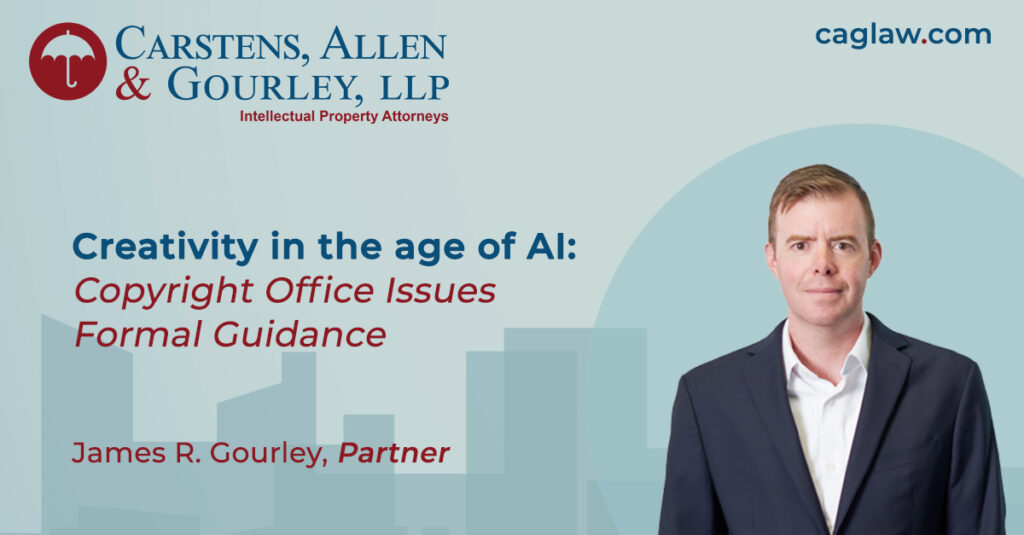Creativity in the age of AI: US Copyright Office Issues Guidance for AI-Generated Content
The US Copyright Office has developed guidance on how to register works containing content generated by artificial intelligence (AI) as it has received a growing number of applications claiming copyright for AI-generated material. Such applications have been denied if the work contained no human authorship, while other applications failed to disclose the inclusion of AI-generated material. The Office has now provided guidance to applicants on how the human authorship requirement applies to the registration of works containing AI-generated content. The Office recognizes that AI-generated works raise other copyright issues and is launching an initiative to explore those issues.
- Human Authorship Required
The guidance first explains that copyright law can only protect material that is created by human creativity, and that the term “author” used in both the Constitution and the Copyright Act only applies to humans. The Supreme Court case of Burrow-Giles Lithographic Co. v. Sarony is cited for the proposition that a photograph can be subject to copyright protection as long as it is the product of an original intellectual conception of the author, and repeatedly referred to authors as human, describing the authors as a class of “persons.” The Copyright Act only provides copyright protection for “works of authorship” and federal appellate courts have confirmed that this means the work must be created by a human. The Compendium of Copyright Office Practices has also long required that works be the product of human authorship, and the Office will not register works produced by a machine or mere mechanical process that operates randomly or automatically without any creative input or intervention from a human author.
- How the Office Applies the Human Authorship Requirement
The Copyright Office will consider whether AI contributions to a work are the result of mechanical reproduction or original mental conception by an author. If the AI technology determines the expressive elements of its output, the generated material is not protected by copyright and must be disclaimed in a registration application. However, if a work containing AI-generated material also contains sufficient human authorship, such as creative selection or arrangement of the material, then copyright will only protect the human-authored aspects of the work, not the AI-generated material. The extent of human creative control over the work’s expression is what matters.
- Guidance for Copyright Applicants
The Copyright Office requires applicants to disclose the inclusion of AI-generated content in works submitted for registration and provide a brief explanation of the human author’s contributions to the work. Applicants must use the Standard Application, identify the author(s), and describe the human-authored portions of the work in the “Author Created” field. AI-generated content that is more than de minimis should be explicitly excluded from the application. Applicants who have already submitted applications containing AI-generated material must check that the information provided to the Office adequately disclosed that material. They should take steps to correct their information so that the registration remains effective. Applicants who fail to update the public record after obtaining a registration for material generated by AI risk losing the benefits of the registration.
- Conclusion
Registering a copyright is more complex than it may seem at first, and the new frontier of AI-generated content is only making it more so. Completing the forms associated with copyright registration require careful attention and knowledge of Copyright Office law and procedure. By using the correct approach, some creative works that includes AI-generated can be registered.


